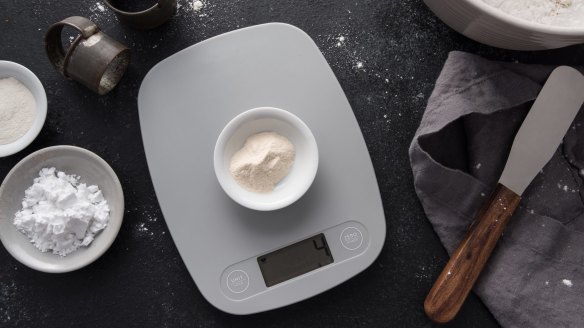Ingredient X: What is xanthan gum?

What is xanthan gum? G. Petiver
It is a thickener used in the oil industry to stabilise mud when drilling, added to concrete underwater to stop it washing away before it sets, and used in the construction of artificial skin. Oh, and it is also used as a stabiliser in ice-cream, and to bind ingredients in gluten-free bread and those low-fat but quite viscous salad dressings that taste like dusty herbs. It is a polysaccharide – a long-chain starch molecule that is really good at holding water. It is made in factories where Xanthomonas campestris, the same bacterium that causes black rot in leafy vegetables, feeds on a solution of sugar and spits out the gum. Some xanthan is produced from the lactose derived from whey (a byproduct of the dairy industry), rendering it unsuitable for vegans.
Why do the French fold their lettuce? P. White-Commins
My daughters went to a local school where 60 per cent of the children came from French-speaking families. Our school fete was famous with its licensed outdoor cafe covering 16 times the space given to the bouncy castle and merry-go-around combined. When dining with school parents, who called themselves "Frenchies" and us native-born as "Aussies" or "Skips", they would carefully fold lettuce leaves on their plate into neat parcels with their knife and fork before popping the green into their mouth. When asked why, their reasons would differ. One mum said it was because cutting the lettuce would indicate to the host that their choice of lettuce was too large or too tough and therefore cutting it was an insult. One gentleman, a wine importer, said his father explained it was because the vinaigrette would remove the silver from the plated knives. Another suggested it was because lettuce browns and its flavour becomes dull when cut. They proceeded to argue about it in French until the cheese board arrived, when they agreed, in English, that the cheese was far better in France.
We were travelling in Turin and ordered fritto misto. We were expecting fried seafood but were served a bizarre mix of meat, fruit and vegetables. S. Kennedy
And your fritto misto probably contained chunks of lung, kidney, brains and liver. The Italians love deep-frying and have a saying, "Fritte sono buone anche le scarpe", meaning even a shoe tastes good when it's fried. English food writer Claudia Roden suggests the Italian love of deep-fried food comes from the Sephardi Jews, who came to Italy to escape persecution during the Spanish Inquisition. Each region has a different version of the dish, which is basically a mixture of deep-fried mixed stuff. In Turin they serve fritto misto alla piedemontese, which includes offal and sharp pieces of deep-fried apple. Fritto misto alla milanese could have brains, liver, sweetbreads, zucchini, eggplant and mushrooms. In Bologna, the dish might have lamb chops, chicken breast and various offal fried alongside cauliflower and artichokes. Closer to the coast fritto misto di mare, or fried seafood (mainly small fish), is more common. An interesting cooking detail is that each portion is cut to a different size depending on its mass, density and water content so they can be fried together and be ready to be served at the same time.
Send your vexing culinary conundrums to brainfood@richardcornish.com.au or tweet to @realbrainfood.
Appears in these collections
More:
From our partners
Original URL: https://www.smh.com.au/goodfood/ingredient-x-what-is-xanthan-gum-20190211-h1b4uk.html
